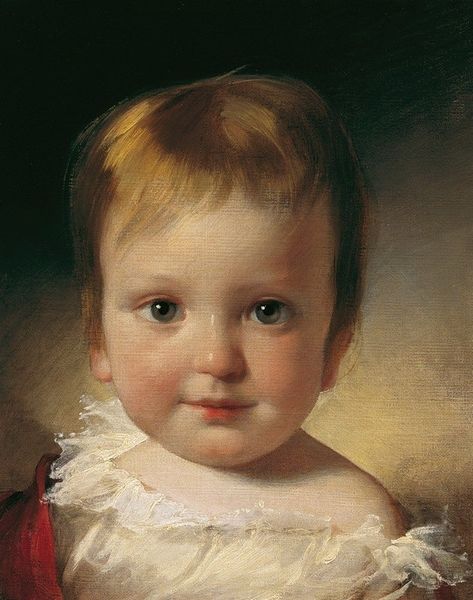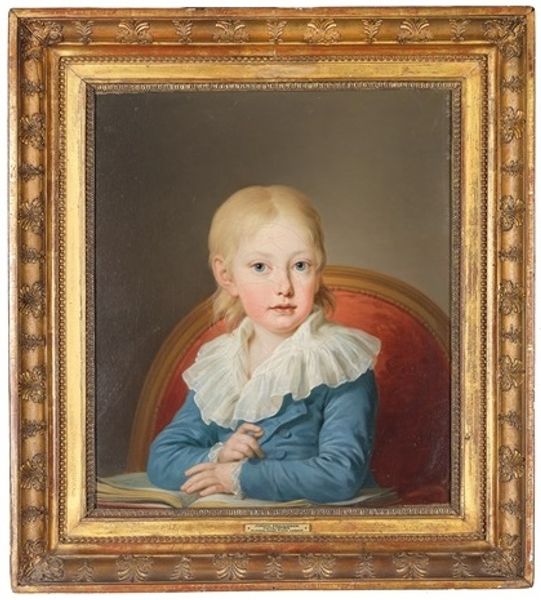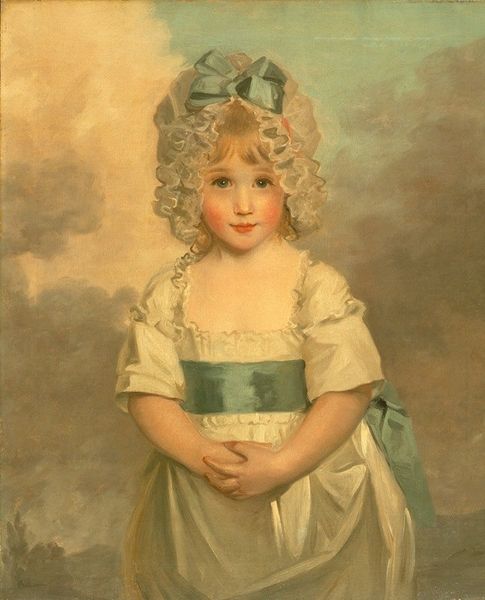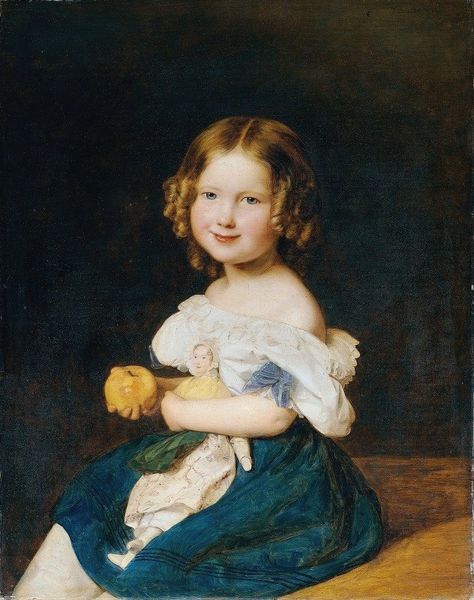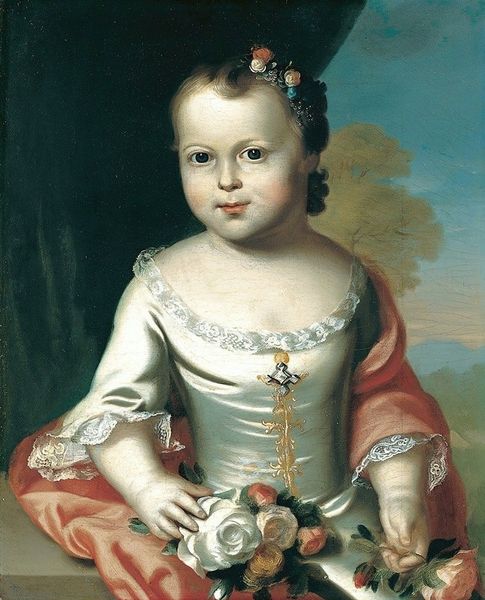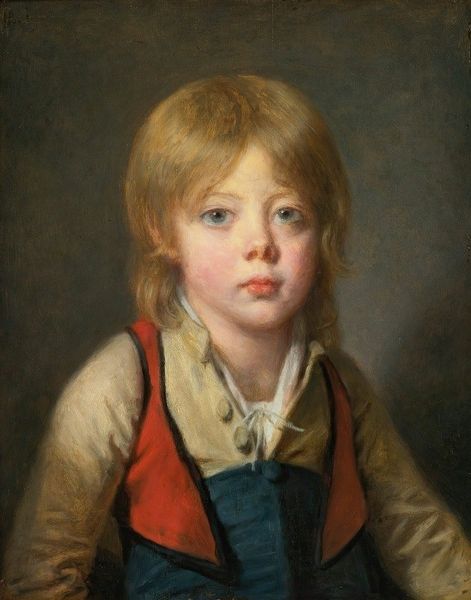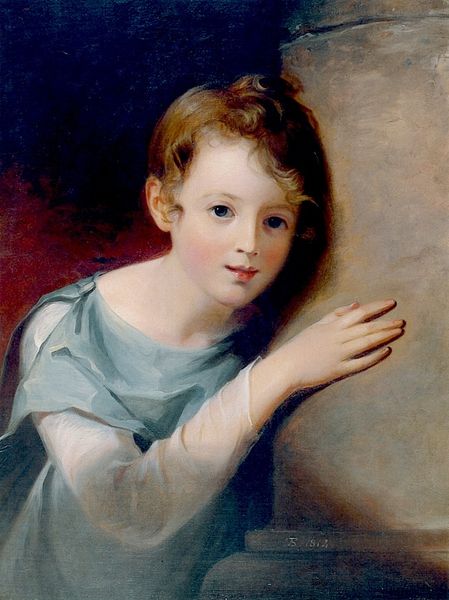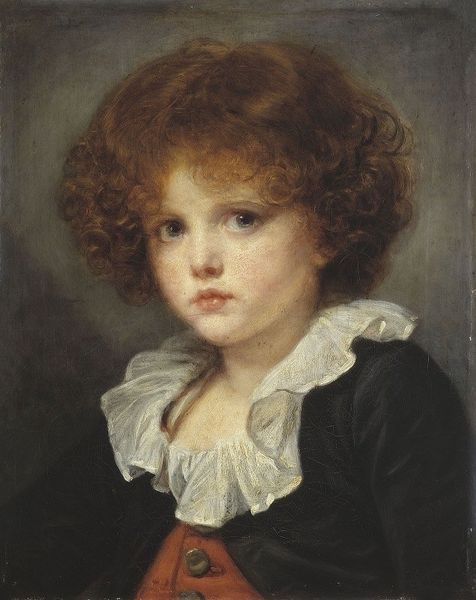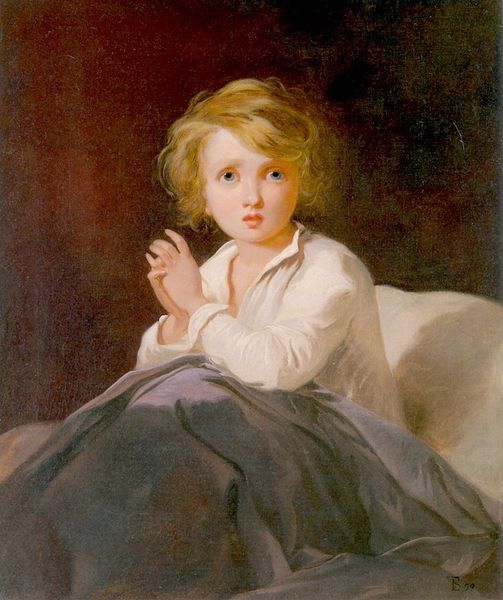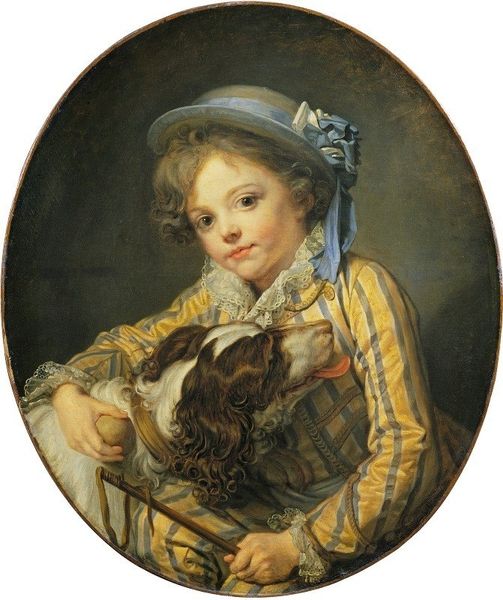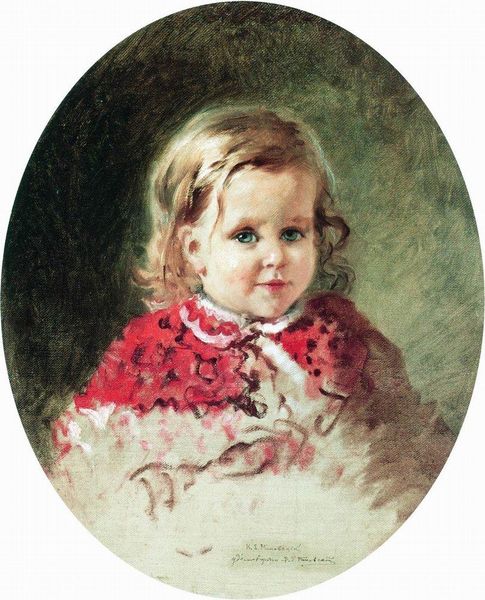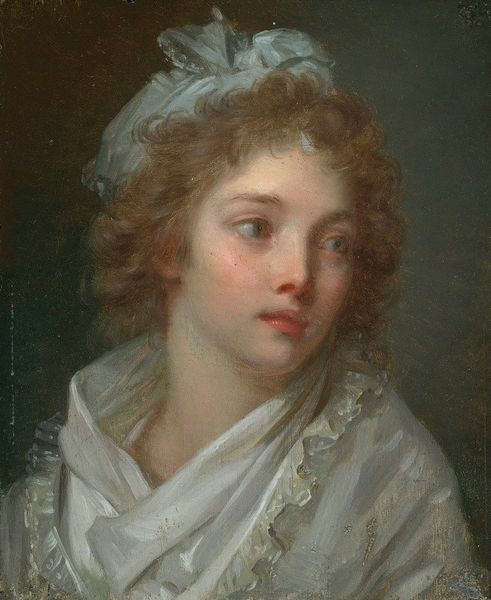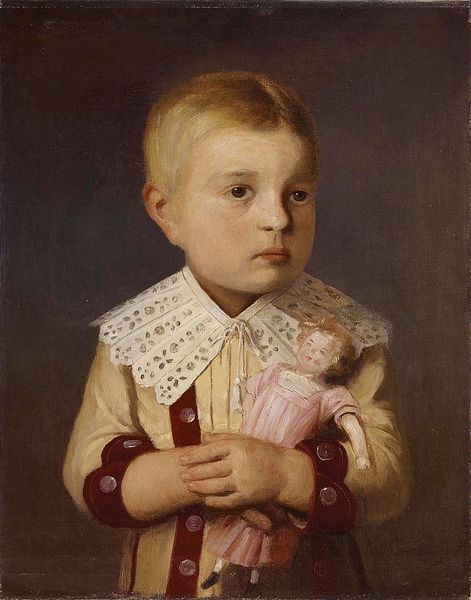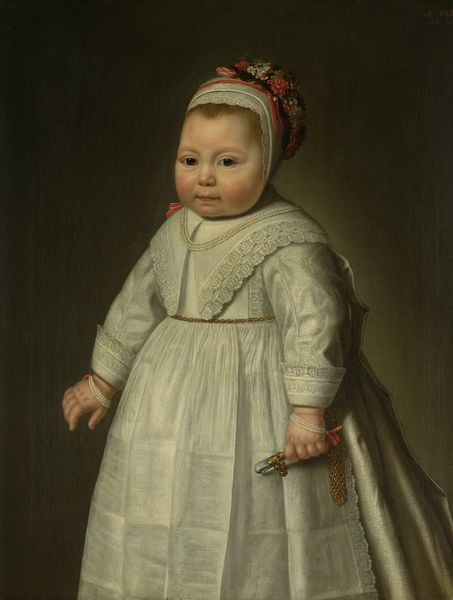
Copyright: Public Domain: Artvee
Editor: This oil painting, "A Boy as Pierrot," was created around 1785 by Jean-Honoré Fragonard. The sweetness of the child is almost unsettling. What can you tell me about the significance of this portrait? Curator: This portrait allows us to examine the social and performative aspects of childhood in the late 18th century. Fragonard has depicted this boy as Pierrot, a character from the commedia dell'arte. Can you see how this might tell us something about how identities were constructed and displayed at that time? Editor: So, he’s not just a child; he's playing a role? What does Pierrot represent? Curator: Exactly! Pierrot was a stock character, often portrayed as naive, innocent, and somewhat melancholic. By dressing the boy as Pierrot, Fragonard engages with contemporary debates around innocence, artifice, and the performance of social roles. The Rococo period, with its emphasis on ornamentation and lightness, further complicates this. Editor: It makes me consider the artificiality of the aristocracy at the time and maybe the constraints of masculinity in this period. Was this type of portrait common? Curator: It was, and by situating the boy within a well-known theatrical archetype, Fragonard's work asks us to question what is "natural" versus "performed," and highlights the power dynamics inherent in portraiture and representation itself. Do you think Fragonard is celebrating or critiquing these power structures? Editor: That’s really changed how I see this innocent portrait! The painting feels like it’s critiquing something bigger. Curator: Indeed. Considering the socio-political context enables us to deconstruct the art and challenge established meanings. Editor: Thank you. Now, I see it with new eyes!
Comments
No comments
Be the first to comment and join the conversation on the ultimate creative platform.
